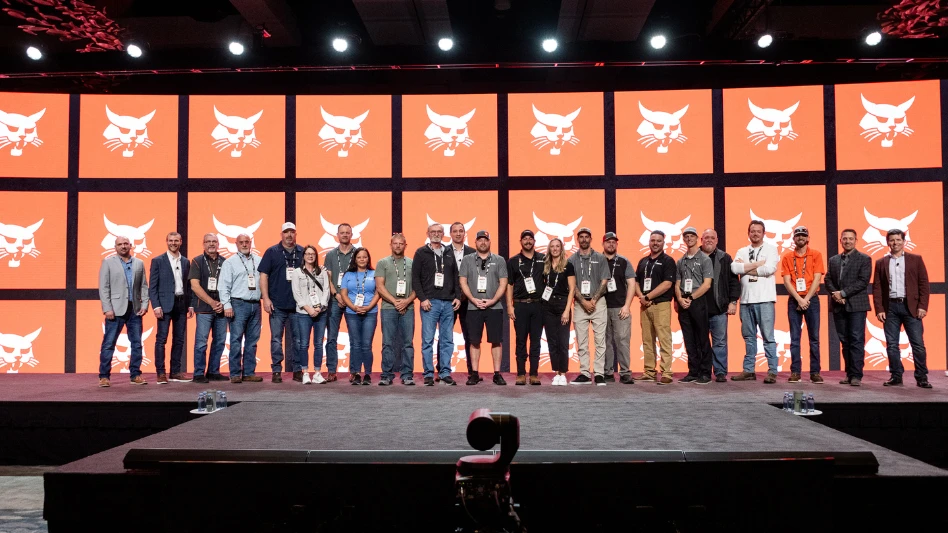You would never think of sending a crew to a site with a tool that takes them twice as long to complete the job. So why are contractors still using pencils and paper to manage their businesses when software programs can do the billing, invoicing, scheduling and routing in half the time? Let’s find out.
SOFTWARE BENEFITS. “The No. 1 reason why a landscape contractor should buy business software is it makes it easy to manage his business,” says Chris Chapman, chief operating officer of Boston-based Insight Direct. No more memorizing route schedules or spending hours writing invoices. Software helps contractors organize their customers with its automated systems. With a click of a button users can view schedules, estimates, bills, statements and full customer histories.
According to Lawn & Landscape research on business technology integration, nearly 66 percent of landscape contractors have updated their computer software within the last year. Likewise, according Lawn & Landscape State of the Industry data, the average contractor spends more than $1,700 annually on business software purchases and upgrades.
Chris Kozol, owner of Forest Green Lawn Care, Omaha, Neb., was always afraid of losing his customer information, but business software enables him to keep all that vital data secure. “Now I can keep track of specific things for specific customers,” he says.
Software also helps companies provide better customer service, says Jamie Misch, Marathon Data Systems, Tinton Falls, N.J. Clients can easily receive information because all contractors have to do is pull it up on their screen. “Contractors need to realize people who are not using software are at a disadvantage to companies who are using software,” she says.
TIME-SAVING DEVICE. Surveys conducted by Insight Direct indicate that software saves contractors three to four hours a day managing their businesses, including time spent on scheduling, estimating and billing. The surveys also show software decreases drive time and billable time by 20 percent. Kozol used to store routes in his head, now software maps out where each yard is so he can visualize routes on the computer. “Location and time are what my company is based on,” he says. “Grouping yards together has saved time, money and fuel.”
Time is money in the landscape industry and the less time spent on paperwork the more time contractors have to focus on business growth. “I have been in business for more than 12 years and the last two years I have been using software,” says Jason Holder, owner of Perfect Lawn Care in Powhatan, Va. “When I started using software I only had 40 clients and now three years later I have more than 350. Software keeps me organized and helps me grow with ease.” Software has been vital when customers inquire about money issues, Holder adds, pointing out that he can quickly find their last payment, the amount and the check number.
SOFTWARE PRICING. Buying software shouldn’t be about choosing the lowest price, Misch says. Contractors should purchase a program they can see themselves using in five years. Software costs depends on how many people will be using it. For example, a company with five users will not need the same program as a company with 15. As such, contractors don’t want to invest in a large software package and only use a couple of the features. “Why pay for something you aren’t going to use?” says Dave May, marketing manager at Adkad Technologies, Delanson, N.Y. Some companies offer one software program that can be used by any size company, while others offer individual software for smaller and larger companies. For instance, the software for smaller companies is developed for new contractors just looking for a billing and invoicing system.
Software varies in price, as well. Some programs start around $100 while others cost as much as $6,000. Price depends on what the contractor needs and how many people will be using it. Kozol purchased his software for $2,300 and pays an annual fee of $400 for access to classes, a feature he was looking for when he chose the software company. Another concern contractors have is software that soon becomes obsolete. However, software companies constantly update their programs with new features. Misch says her company updates software quarterly with new features based on staff observations and customer suggestions. For some contractors, updates are included with their annual maintenance contract. For others, they have to purchase the upgrades when they become available.
SOFTWARE FEATURES. Software provides contractors with a simple way to manage their businesses. No more rifling through mounds of papers to find an old work order. No more arguing with customers over invoices. Software allows users to view all of the information they need on the screen in front of them. Automated billing and invoicing systems are fast, efficient and minimize errors. Once a contractor enters a job name, he won’t have to enter the name again. These things reduce the amount of time contractors and their employees spend on a task.
Chapman’s favorite software feature is the scheduling assistant. “It contains all the information you need to make an intelligent, proactive scheduling decision,” Chapman says. One click shows users a list of all opened jobs and the closest proximity to these locations. A contractor can view a map of the customer’s area, who’s working nearby and schedule the job while on the phone with the client. Another feature is the ability to track how their business is doing. “Some software shows a contractor where he’s doing the most business, helps him set budgets and keeps track of advertising,” Misch says.
Holder uses his tracking system to see how business has grown from year to year. “I can track and see how much money I made during this same week last year,” he says. He also uses the customer notes feature on a daily basis. Instead of storing data, such as “the customer is picky so don’t forget to close the gate” in his head, Holder types the note next to the customer’s name so everyone can view it.
FINDING YOUR SOFTWARE. Buying business software doesn’t have to intimidate a landscape contractor. Prior to purchase, May says contractors should ask, “What do I do on a daily basis? What are my business needs?”
Contractors should consider a software package they see themselves using for many years. “They should find a company who is investing in technology – a company that will bring them up to the next platform,” Misch says.
Kozol spent time researching software to fit his company. He wanted a developer he could easily contact if he had problems, a program geared toward the landscape industry and software he could customize to his specifications.
Holder, on the other hand, needed to organize his business because he was beginning to fall behind in jobs and billing. He also wanted a program that was easy to use, especially if an employee had to retrieve client information. “I wanted to keep it simple,” he says.
AFTER THE PURCHASE. A software company’s job doesn’t end after the sale. Even though software training is often provided, contractors will have questions as they begin to use the program. Contractors can purchase a support package, visit software company Web sites, e-mail their questions or simply call the developer. A selling point for Kozol was the online classes his software company provides its clients. If he has a specific problem, such as how to schedule a job, he goes online and takes a class on that topic.
After purchasing, Chapman says contractors need to prepare for the culture shock it may cause their staff. Learning a whole new way of doing things can be frightening for employees. “I was nervous about using software, but once all of the information was in the computer everything was good,” Holder shares. Training is a continuous process and contractors are not going to know how to immediately use every software feature. “I am still learning,” says Kozol, who has been using his software for more than a year.
Since using software, Kozol’s marketing is up, his numbers are more exact and he no longer uses books to keep track of his customers. Likewise, Holder used to keep everything in his head and now it’s organized in his database. Has it changed the way they do business? As Kozol says, “I am never going back to paper.”

Explore the June 2007 Issue
Check out more from this issue and find your next story to read.
Latest from Lawn & Landscape
- North by Northwest's charitable act for the Ronald McDonald House Charities
- Coxreels expands V-100 Series product line
- Landscape Workshop expands with 2 acquisitions
- Wilson360 adds Daniel Grange as new consultant
- Batman and business
- CH Products releases new tree stabilizer
- Savannah Bananas founder Jesse Cole to speak at Equip Exposition
- Catch up on last year's Benchmarking report





